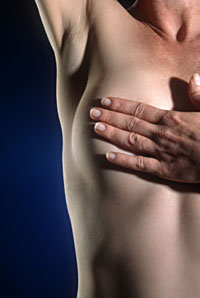|
Breast Cancer Awareness Should Be Part Of Everyone’s Health KnowledgeBreast cancer awareness should be part of everyone’s health knowledge. The statistics are undeniable: one in every eight women already has breast cancer or will develop it. Over 40,000 US women died of this illness in 2007. Men do not escape, either. Of the 1,600 US men expected to be diagnosed in 2007, 25% will die.
Early Detection The primary tool in your battle against breast cancer is early detection. Over 95% of those diagnosed live at least five years–if their cancer is detected early. It’s incredibly important to do self-tests and have regular mammograms. Every breast cancer awareness resource states unequivocally that mammograms are one of the best early detection methods available–yet some 13 million American women over 40 have never had one. Who’s at risk? Breast cancer awareness means we can statistically identify some risk factors to determine where breast cancer is most likely to occur. Gender: Women run the highest risk. This is primarily due to the fact that female breast tissue is constantly influenced by estrogen and progesterone. Women run about 100 times more risk for breast cancer than men. Age: Age increases risk. Statistics show that 17% of those diagnosed with invasive breast cancer are women over 40, while 78% are 50+ when diagnosed. Genetics: Medical research suggests that 5–10% of those diagnosed inherited a mutated BRCA1 or BRCA2 gene. When those genes are normal, they contribute to the process of a cell creating certain proteins that maintain normal cell growth. Your History: Having cancer in one breast multiplies the risk of developing it in the other (or in a different part of the same breast). This is independent of any recurrence of the original cancer. If you have locally advanced breast cancer and are overweight, your prognosis will be worse than slimmer women. Race: Caucasians are more likely to develop breast cancer, but African-Americans are more likely to die from it. Asians, Hispanics and Native-Americans have less risk of incidence or death. Family History: The risk of developing breast cancer is higher in families where two or more relatives have already been diagnosed with it, or where it has occurred in a member of the family before age 50. Having a relative with two different kinds of cancer, or a having a male relative with breast cancer, is also a sign of increased risk. Research indicates that a family with a history of breast or ovarian cancer and Ashkenazi Jewish heritage is at greater risk, as is a family with a history of related diseases, such as Li-Fraumeni or Cowden Syndrome. It’s estimated that 20–30% of women with breast cancer have a family member with this disease. Other Risk Factors: · Women who began menstruating before 12 or did not enter menopause until after 55. · Individuals who had childhood radiation treatment for another cancer. · Women who took Diethylstilbestrol in the 1940s to the 1960s. · Women who have not had children before age 30.. · Women who used oral contraceptives within the last 10 years. · Women who undergo long-term postmenopausal hormone therapy. Fortunately, society’s increased level of breast cancer awareness has fueled medical advances. However, the single most important factor in treatment is still in your hands–do self-checks and get regular mammograms. For more information, visit breastcancer.org. Also, follow this link to Amazon and search "breast cancer books."Visit these pages for more information: Knowing How To Have Safe Sex Minimizes STI Fears STD Symptoms: Get Your Facts Health Benefits Of Sex Make Making Love Worth It Paying Attention To Male Sexual Health Issues Can Keep You Ready For Love Keep Yourself Safe From Sexually Transmitted Infections Lesbian Sexual Health – Busting Myths To Stay Healthy And Risk-free Sexual Health For Teens = Education and Protection Is Breast Cancer Prevention Possible? Return to Sex Toys Home
|





